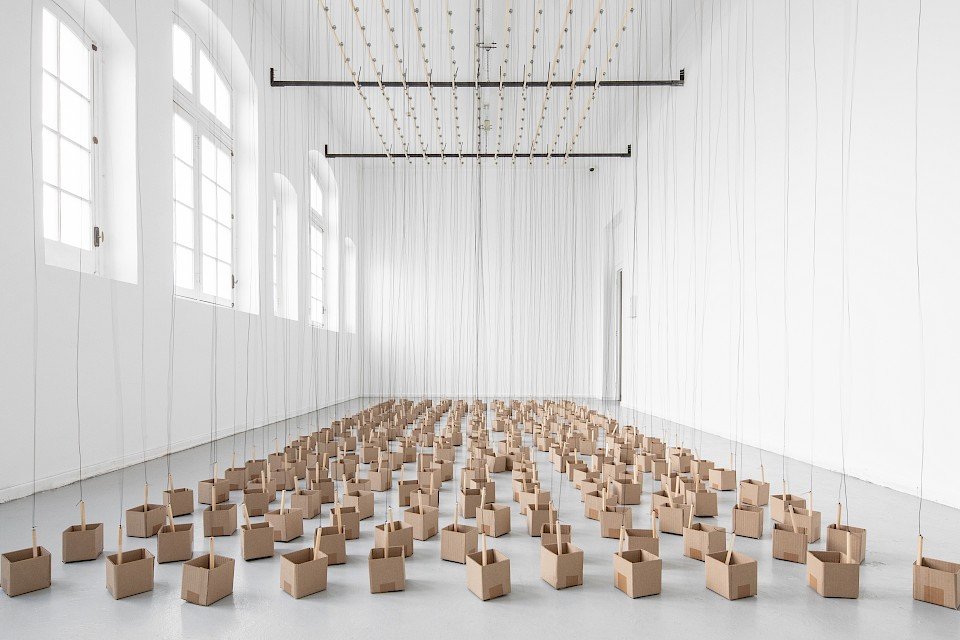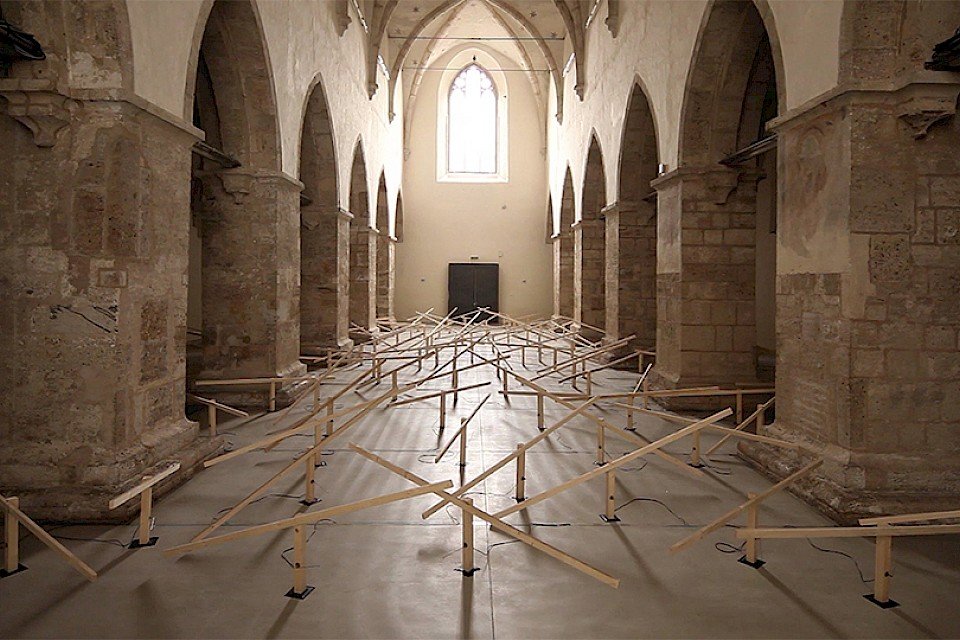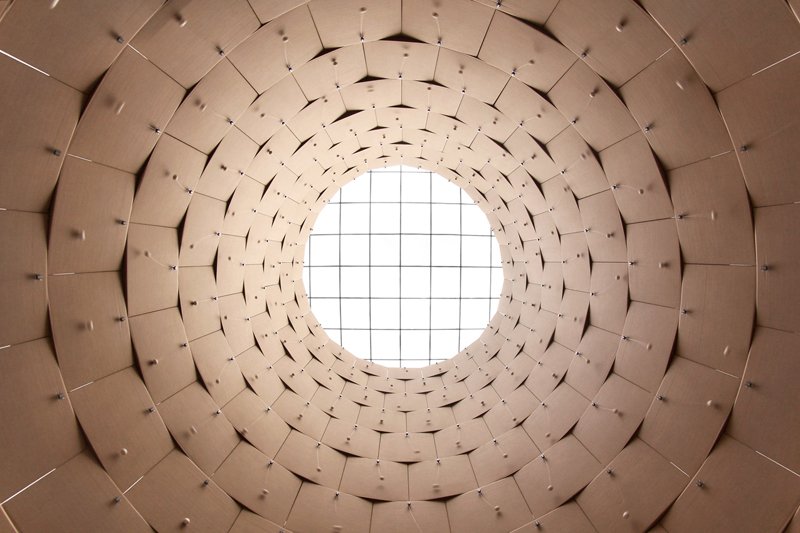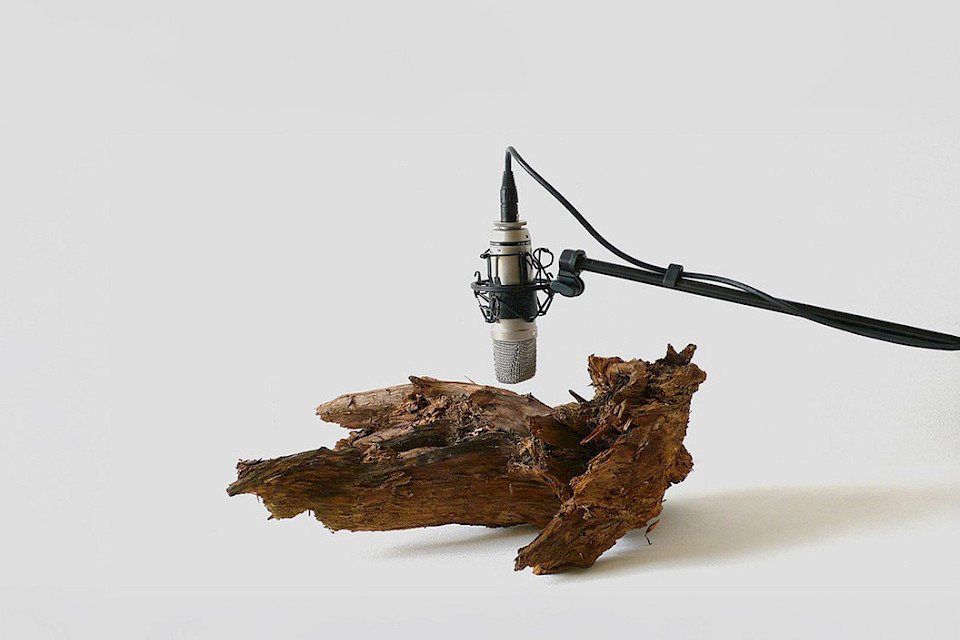Who is Zimoun? Picture this: The sound comes first, before the room or the work itself—an inhalation and exhalation of wood, wire, and cardboard, as if the space were breathing. Not metaphorically. The sound doesn’t resemble breathing; it forces the realization that the act of respiration is an industrial process, a mechanism of repetition. As one steps closer, the room asserts its scale: an array of motorized elements—cardboard panels trembling against walls, wires whipping the air, wooden rods drumming against their confines. Each unit behaves predictably in isolation, yet together they generate something vast, unknowable, somewhere between a rainstorm and a malfunctioning assembly line. The chaos is structured; the structure, chaotic.
This is the world of Zimoun, an artist who doesn’t so much sculpt with sound as engineer collisions between material and motion, allowing the sonic to emerge as the byproduct of things touching, vibrating, resisting. To step into one of his installations is to experience a room as an instrument—not played by a musician, but activated by its own internal physics.
Zimoun’s work matters because it dismantles the invisible assumptions governing how we experience sound, space, and material. In a world where music is increasingly compressed into digital files and architecture is designed for efficiency rather than resonance, his installations reintroduce tactility, disorder, and presence. They remind us that sound is not just something we hear but something that exists in the air around us, something we touch, something that touches us back. His machines don’t strive for productivity or progress—they simply are, endlessly repeating their minor rebellions against silence. To engage with his work is to reawaken an awareness dulled by convenience, to re-tune the ear to the raw, percussive rhythms of the world, to learn that listening is an act of being present.

Who Is Zimoun? A Study in Material and Motion
Born in Bern in 1977, Zimoun has sidestepped the expected trajectories of both visual art and music, forging a space where the two disciplines collapse into one another. His practice—rooted in an obsessive exploration of industrial materials—resides at the intersection of minimalist sculpture and kinetic sound. The works operate within a logic of systems, where small individual components form an ecosystem that feels alive. But alive in what way? Unlike the synthetic biomimicry of artificial intelligence, his works don’t pretend to approximate the organic; instead, they reveal how mechanical processes already pulse with a kind of primitive life.
Zimoun’s impact on contemporary sound art is tangible, threading through movements in kinetic installation, generative composition, and post-minimalist sculpture. His work is housed in institutions like the Museo d’Arte Moderna di Bologna, the Beall Center for Art + Technology, and the Knockdown Center in New York. Through his co-founding of Leerraum [ ], an interdisciplinary platform for reductive art practices, he has fostered collaborations that expand the dialogue between sound, architecture, and sculpture.

Key Works and Their Significance

605 Prepared DC-Motors, Cardboard Boxes (2017)
Displayed at the Galleria Civica di Modena, this installation featured hundreds of identical cardboard boxes, each outfitted with a small DC motor affixed to a thin wire, striking its surface. The result: a field of synchronized yet individual percussive impacts, an auditory texture resembling rain—or perhaps an army of small creatures scuttling in unison. Despite their identical construction, each box develops its own voice, dictated by microscopic variations in material or tension. Here, Zimoun unpacks the illusion of uniformity: even in a world of mass production, uniqueness asserts itself through the inherent imperfections of matter.

30,000 Plastic Bags, 16 Ventilators (2010)
A room filled with plastic bags, suspended and animated by air currents, rustling and whispering like leaves in the wind. The installation turns a disposable artifact of consumer culture into something spectral, delicate, almost melancholic. The work speaks to transience—of sound, of material, of the human tendency to overlook the beauty of the mundane. It is an echo chamber of waste, made strangely luminous.

25 Woodworms, Wood, Microphone, Sound System (2009)
A slow, nearly imperceptible auditory experience, where the amplified sound of woodworms burrowing through timber becomes a meditation on decay. Unlike his mechanical installations, this piece relinquishes control entirely, allowing biological time to dictate the sonic outcome. The work challenges perception: is this an act of destruction, or creation? The sound—minuscule, organic, relentless—suggests both.
Theoretical Resonance: What Zimoun’s Work Reveals
Zimoun’s practice engages in a larger conversation about space and perception. Critics often liken his installations to natural systems—wind, rain, waves—yet their mechanical origins resist such easy classification. His works do not reproduce nature; rather, they uncover the rhythmic logic that binds the artificial and the organic.
Alexander Scholz of Holo magazine notes how Zimoun’s work “evokes the majesty of nature through industrial means,” situating him within the discourse of posthumanism and ecological art. The philosopher Timothy Morton’s notion of “hyperobjects”—things so vast and interwoven with human experience that they elude comprehension—feels apt. A Zimoun installation might be a hyperobject in miniature, a self-contained system that exposes the larger chaos governing the material world.
Where to Experience and Support Zimoun’s Work
For those wanting to witness the immersive environments Zimoun creates, his installations continue to tour globally. His official site, Zimoun.net, provides updates on exhibitions, as well as video documentation of past works. To support his efforts, explore Leerraum [ ], a collaborative project fostering experimental art across disciplines.
Zimoun’s work doesn’t ask to be interpreted in neat narratives. Instead, it invites the listener to inhabit a space where structure gives way to spontaneity, where the manufactured world murmurs, rattles, and breathes.

References
- Allison, M. (2019). ‘Sonic Architectures’, Sculpture Magazine, 38(4). Available at: https://sculpturemagazine.art.
- Beall Center. (2014). Wall of Sound: New Work by Zimoun. Available at: https://beallcenter.uci.edu
- Cambridge Core. (2018). ‘Materiality in Sound Art’, Organised Sound, 23(3), pp. 258–269. https://doi.org/10.1017/S1355771818000233.
- Chibalashvili, A. et al. (2022). ‘Interactive Sound Installation as an Implementation of Contemporary Communication Models’, Postmodern Openings, 13(2), pp. 239–253. https://doi.org/10.18662/po/13.2/451.
- Clot Magazine. (2020). Interview with Zimoun. Available at: https://clotmag.com
- Fakewhale LOG. (2024). ‘Harmonic Dissonance: Zimoun’s Sound Installations’. Available at: https://log.fakewhale.xyz.
- Ignant. (2021). ‘Zimoun’s Mechanical Installations’. Available at: https://ignant.com
- NYUAD Art Gallery. (2019). Zimoun: Exhibition Catalog. Abu Dhabi: Akkadia Press.
- Ruiz Íñigo, M. (2024). ‘Nature vs Technology: Reflections on Zimoun’, Maskana, 15(2), pp. 167–180. https://doi.org/10.18537/mskn.15.02.11.
- Scheidegger & Spiess. (2021). Zimoun: A Selection of Installations 2009–2021. Zurich: Scheidegger & Spiess.
- Scholz, A. (2021). ‘Primitive Complexities’, in Zimoun: A Selection of Installations. Zurich: Scheidegger & Spiess, pp. 12–19.
- The Quietus. (2021). ‘Zimoun’s Rebellious Objects’. Available at: https://thequietus.com.
- Yatzer. (2015). Zimoun: The Magician of Spatial Sound. Available at: https://yatzer.com.
- Zimoun. (2021). Zimoun: A Selection of Installations 2009–2021. Zurich: Scheidegger & Spiess.
- Zimoun. (2025). Studio Zimoun. Available at: https://zimoun.net.




